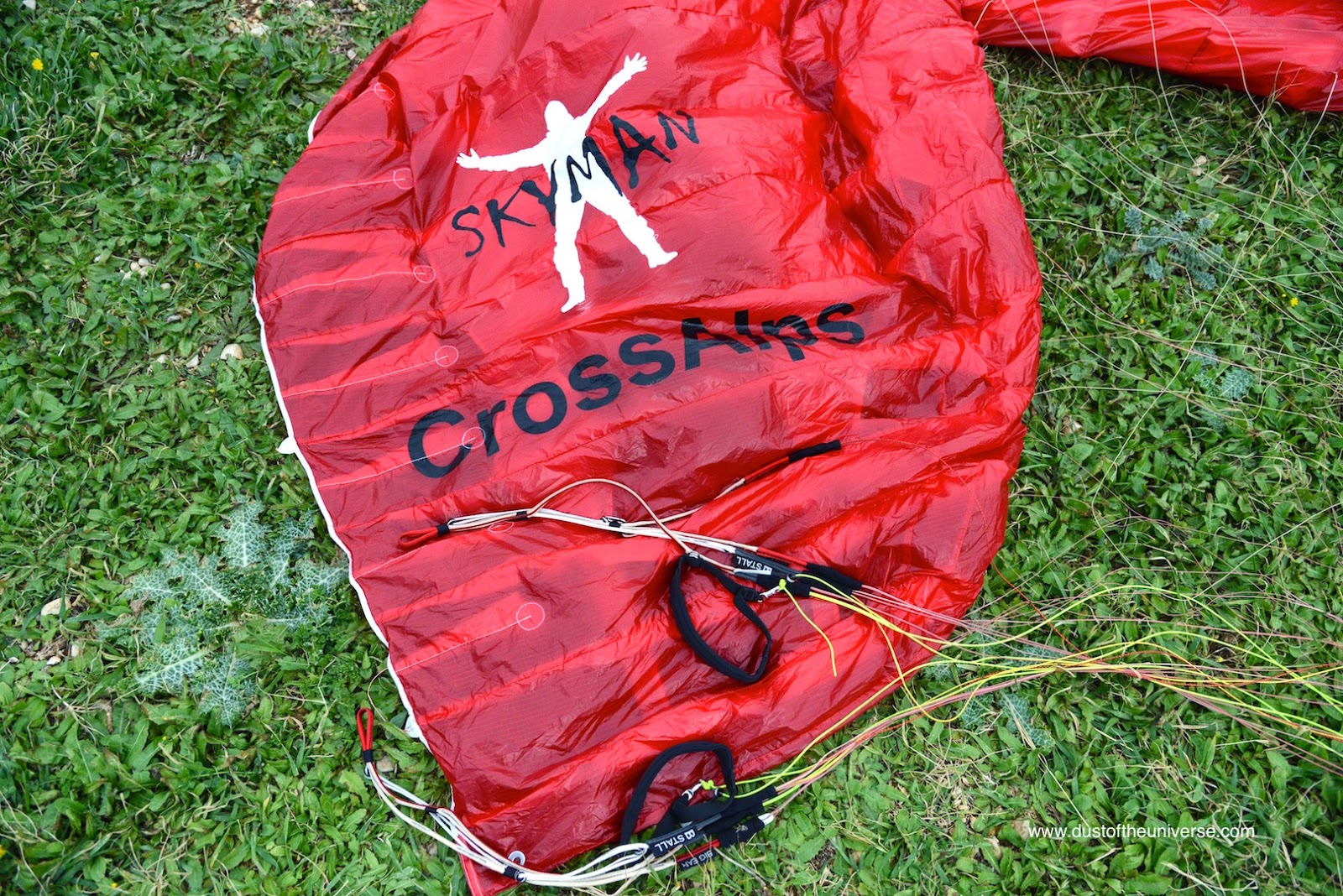Last year GIN released the original Carrera with a B certification .
He stated at the time that this glider needs active piloting and is destined to experienced pilots with a background in a performance/intermediate glider.
Unfortunately, lots of pilots were slightly mislead by the B label, and did in fact bought the Carrera .
For me it was an excellent glider that had a superb
climb rate, a respective glide angle and great maneuverability. The original Carrera was competing easily with the C class with top scores.
For sure it was a bit handful for the B class, but not for the pilots who were used to fly moderate aspect ratio C gliders.
In 2015, GIN released another version of his excellent Carrera. The Carrera plus has now lower sheathed lines, and the R&D team claimed to have modified the angle of attack and line lengths to reach more comfort and better overall feel.
Having flown the Original Carrera S ,i have now the Plus version in S size also to see if these modifications are indeed a plus over the original Carrera without the loss of overall performance or are they just simply a marketing tool ? …Let see…
I have flown the Carrera plus S from 90 to 94 .
Pulling the A’s on the Carrera Plus S, showed a slight delay in rising power for the first 70 %, comparing it to the original version. After the 90 % rise, the Carrera plus accelerates to a quick take off. This new characteristic is very good in high winds.The pilot will have the time to catch the glider much sooner.
In the air the brake authority are slightly less than the original version, with a glider that stays more flat in turns. Carving was continuous on the original version, but the Carrera plus will flatten the turn to a more calmer one.
To evaluate the climb rate, i had to fly several times with my trusted friends and in company of reference gliders in that matter.
We confirmed that the climb rate of the Carrera plus is indeed a plus on this new version.
Explanation:
1-Trim speed is slightly reduced by less than 0.5 km/h. A similarly loaded Delta 2 SM has now slightly faster trim speed than the Carrera plus S.
2-The pitch movements on the original Carrera has been changed. The Carrera plus has a slight pitch back in entering cores, and the overall pitch behavior is now more dampened . However the roll is still present as the original version which is excellent.
3-The Carrera plus doesn’t dive in turns allowing a very efficient climb in difficult conditions that could match the best ones in the C category.(We don’t measure climb rate in easy ,constant thermals…No use ! All gliders climb similarly in those conditions)
In turbulent conditions the Carrera plus is indeed more comfortable than the original version as the pitch movements are 50 % more dampened and the glider is now always searching for a leveled flight.
The overall feeling of a more compact and solid tips is felt.
Once inside the core, the pleasure of the turning abilities are present. Of course the extra agility of the Original version has been slightly reduced, but I really enjoyed every thermal as the brakes are still precise and linear and the wing followed my command in a smooth and homogenous turn.
Gliding next to a Delta 2 SM, showed surprisingly a very close and slightly similar glide angle at trim speed, showing that the plus version is still very competitive!
What surprised me more is the glide at bar.
Pushing half bar on the Carrera plus needs a moderate to light pressure and showed the hidden power of this new version. The glide angle at 45km/h is excellent and very competitive to say the least with moderate aspect ratio the C gliders…
Big ears are easy to pull, they open by themselves.
Conclusion:
The Carrera plus still retains its gliding performance. The climb rate in weak and difficult conditions is above any B glider I have tested until now. Low saves are easier to manage.
The main question remains: Is it worth upgrading to the ‘plus’ version?
GIN offered a 35 % more comfortable Carrera plus for a wider range of experienced pilots.
It is still NOT your first average B glider, but for pilots who has enough experience in the category, and wanted a very competitive 6.2 aspect ratio with B certification, or pilots that do not want to sell their original Carreras, and are looking for that extra comfort in general handling, then an upgrade is useful.

































